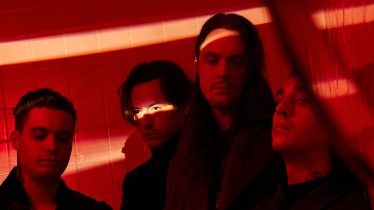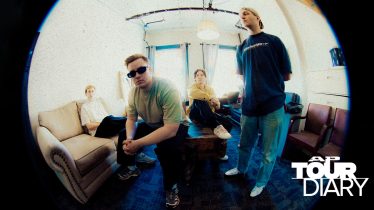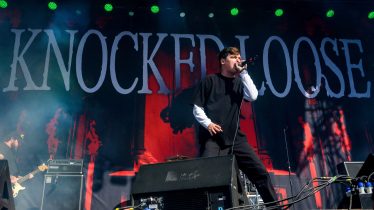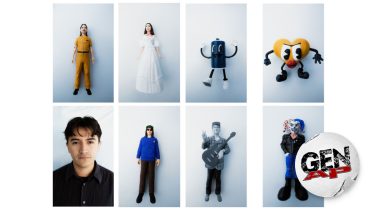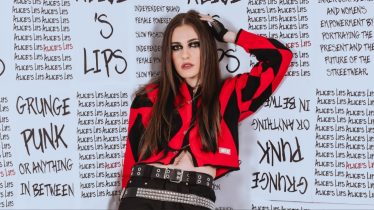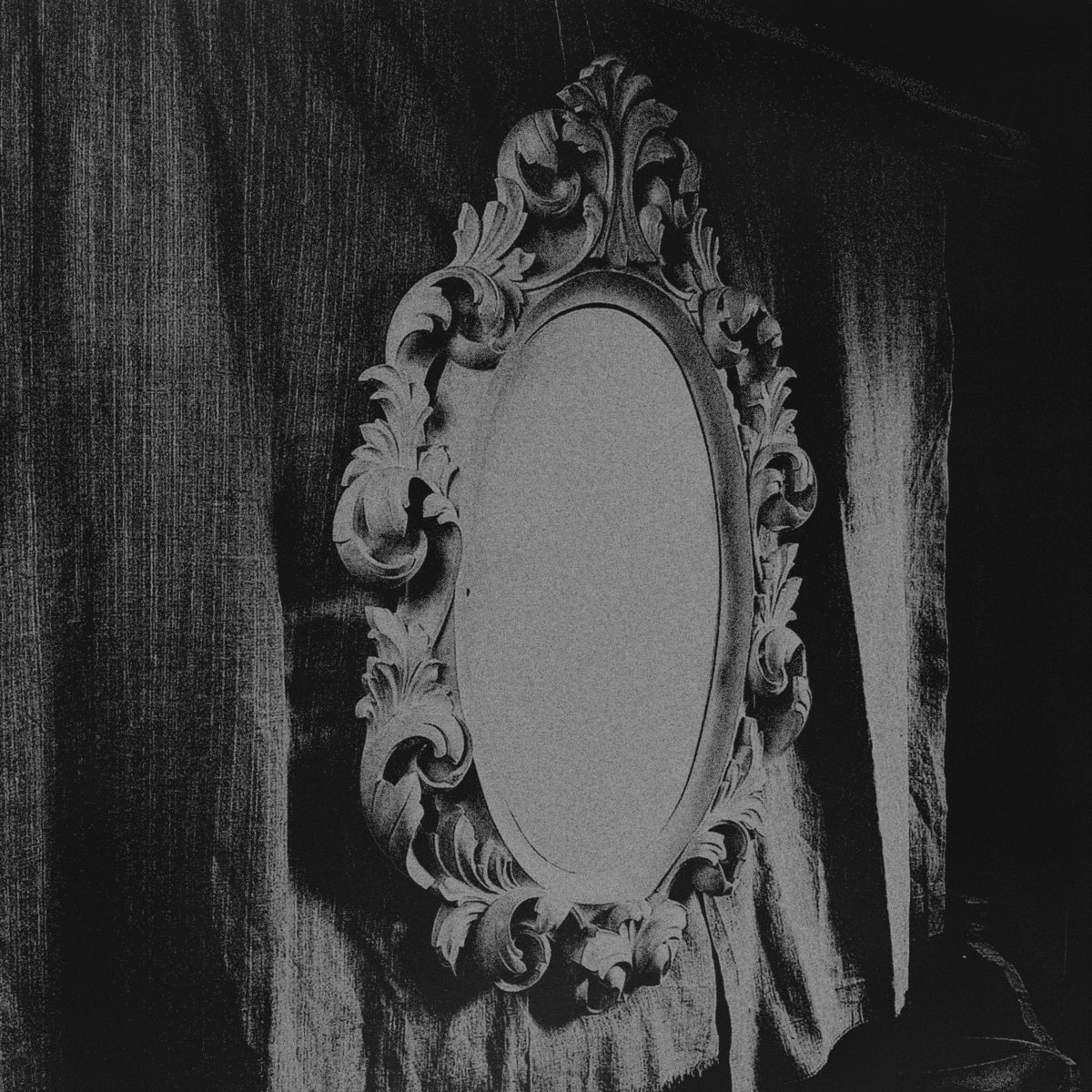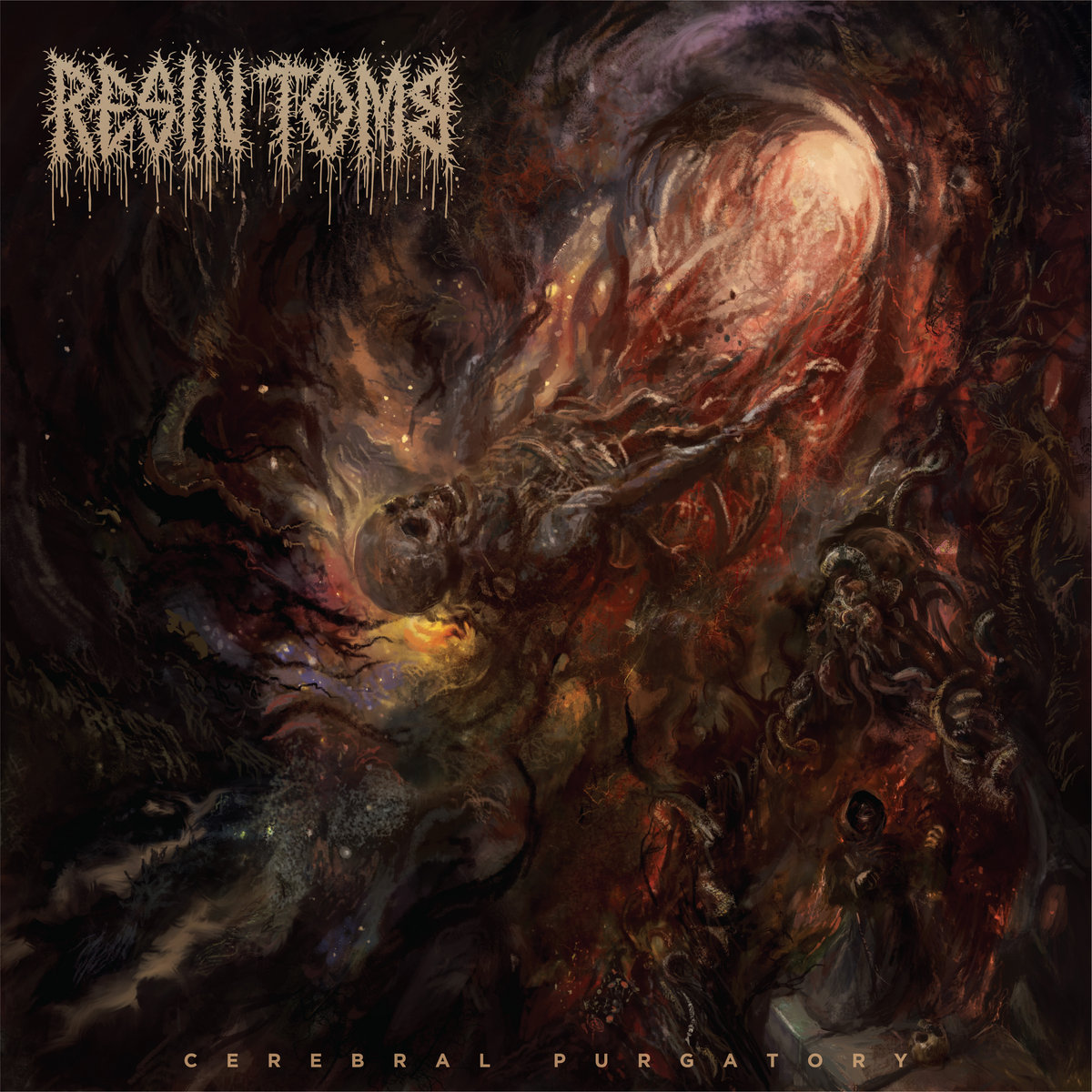
15 punk albums that set up 1994 to be a year of major change for the genre
To consider Alternative Press’ list of 1994’s top 15 punk albums, one has to bear in mind two factors:
- Green Day’s Dookie was released Feb. 1.
- Kurt Cobain died by his own hand April 5.
The alternative nation’s voice was suddenly, shockingly stilled. After three years of the most popular music being an agonized scream over heavy guitars, people wanted something shinier and more upbeat. But they didn’t want to lose the overamplified six-strings and acknowledgment that life was complicated and messy. Dookie had that in spades. Now punk shoved grunge aside and finally dominated rock culture as it threatened to in 1977. A third of these records reflected pop-punk’s commercial ascendance.
Read more: 15 bands who are crucial to the history of noise music
Also, three of 1994’s best punk albums rang with resonances of death, despite all songs having been written (in some cases) years before the grim events with which they’d now be forever connected. No, none of those records were about these grisly circumstances. But now, they sure sounded like it.
Read more: These 15 punk albums of 1986 mutated the underground even further
Looking over the rest, only two grunge albums make the list. People were definitely tiring of angsty, manic depression rock overloaded with fuzz. Then there’s the rise of lo-fi garage—snotty upstarts aping the cheap and nasty vibe and impoverished production of junkshop ‘70s punk 45s. It seemed to be a reaction to more established garage-punk bands embracing recording techniques as pristine as those of mainstream commercial rock outfits. Then Norway’s Turbonegro reacted to the lo-fi trend by mixing ‘70s Camaro rock dynamics with Base One punk, recorded as well as your average AOR act.
Punk rock sure had traveled a long way from the day Johnny Rotten hung hunchbacked from a mic stand, staring bug-eyed into the abyss with withering contempt. Or had it? Here are 1994’s 15 best punk albums.
Green Day – Dookie
The album that finally made punk go mega in America eventually sold 20 million albums worldwide and opened the door for pop punk, Warped Tour and pretty much anything Alternative Press has covered since. And we did not even review it then. Not for lack of trying on Your Punk Professor’s part. I’d pitched Billie Joe, Tre, and Mike to the mag since seeing them the year before in Austin, when they were still a Lookout! Records act. As former editor Jason Pettigrew sighed as we planned last year’s AP Green Day special issue: “I know, I know. We were all busy listening to The Downward Spiral back then….”
Green Day finally had the budget to record a widescreen rock record that didn’t sacrifice balls, energy nor punk attitude. Warner Records staff producer Rob Cavallo gave Dookie a production loud and clean enough to deafen you as you ate off of it. Billie Joe Armstrong wrote a batch of songs so universal, every teenager and young person who heard it screamed, “Holy shit! That’s me!” And once MTV began airing the first single’s video, “Longview”? They all heard it.
The Offspring – Smash
The other album to give pop punk a permanent berth in the pop charts and on radio and MTV, Smash was recorded for a modest $20,000 in January and February. The Offspring frequently recorded at off-hours at North Hollywood’s Track Record Studios to economize. But Epitaph head honcho Brett Gurewitz heard something commercial in “Come Out And Play,” with its nagging “Gotta keep ‘em separated” hook. It certainly differed from Smash’s general 1981 Orange County punk vibe. He hired an independent radio promo man to work it at modern rock stations. Once L.A.’s influential KROQ playlisted it, “Play” took off, aided by a video MTV seemingly aired every three minutes. On their summer club tour, lines wrapping around the block threatened fire code violations for suddenly overrun punk clubs. A few months later, this writer was on the phone with a friend employed at Epitaph as RIAA accountants tallied the album’s sales. Five minutes into the call, a huge cheer spilled out of the receiver: “Smash just went platinum!” he screamed at me. At that moment, it became the first independently released album to achieve that award. Your Punk Professor promptly hung up and called Didjits guitarist Rick Sims, whose song “Killboy Powerhead” was covered on the album, leaving the following message on his machine: “Congratulations, you are about to get some really nice royalty checks.”
Rancid – Let’s Go
With guitarist Lars Frederiksen now a permanent member, Bay Area trad punks Rancid and producer Gurewitz entered Berkeley’s Fantasy Studios, where their pals Green Day had tracked Dookie. They didn’t expect they’d be the third act to drag punk into the charts. After all, for all of their catchiness, Rancid were a little too street and hard for radio. But the disc’s fourth track, “Salvation,” leaped from radio and MTV screens when issued in February 1995. It had a frat-rock vibe similar to acknowledged inspirations the Clash’s “Should I Stay Or Should I Go.” Suddenly, Tim Armstrong’s mush-mouthed Strummerisms, Frederiksen’s crunch chords, Matt Freeman’s nimble bass and Brett Reed’s Gatling gun drums saturated the airwaves, taking Let’s Go’s 22 other tunes to the head of record store lines everywhere. It eventually became certified gold in 2000.
Bad Religion – Stranger Than Fiction
As the Offspring’s freewheeling success required more of Gurewitz’s attention at Epitaph HQ, he found himself bowing out of the band he’d co-founded with bassist Jay Bentley in 1980. Bad Religion were on the verge of releasing their Atlantic Records debut, requiring them to hire Minor Threat guitar hero Brian Baker to replace him on the tour. He’s still a member to this day. Produced with hard clarity by mega-alt-rock studio boffin Andy Wallace, Stranger Than Fiction showcased some of the band’s most indelible songs. The title track, “Infected” and the re-recorded “21st Century (Digital Boy)” all bothered radio and MTV something fierce. Their eighth studio LP was their commercial breakthrough, going gold in 1998. It’s also their only album thusly certified.
Hole – Live Through This
The second LP by Los Angeles noise/grunge/core outfit Hole had the misfortune of being released one week after leader Courtney Love’s husband, Kurt Cobain, died by suicide. Thereafter, there were dark mutterings about his supposedly ghostwriting the record. After all, it was smoother and catchier than their abrasive, ugly debut, Pretty On The Inside. Truthfully, Love and guitarist Eric Erlandson had been writing material for a year-and-a-half, between signing with Geffen and entering the studio. With the careful song craftsmanship and Paul Q. Kolderie and Sean Slade’s commercial-alt production, Live Through This sounded like power pop in Pretty’s wake. The timing also added an unfortunate poignancy to many of the songs. Now hit single “Violet”’s howled “Go on, take everything” hooks rang as a grieving widow’s screams.
Manic Street Preachers – The Holy Bible
The Welsh glam-punk leftists abandoned the eyeliner and spray paint for a widescreen, epic mainstream rock sound on their second LP, Gold Against The Soul. They were left feeling empty by the experience. The third Manic Street Preachers album would be their ugliest. A headful of the nastiest-sounding post-punk records reverberated in James Dean Bradfield, Nicky Wire and Sean Moore’s brainpans as they entered a tiny demo studio in Cardiff during 1994’s first five months. The Holy Bible’s ugly music was matched by the lyrical mood: Child prostitution, the holocaust, serial killers and British imperialism were among the cheery subjects spilling out of the notebooks of Richey Edwards, composer of 70-75% of the lyrics. Considering the band’s philosophical lynchpin was struggling with severe depression, alcoholism, cutting and anorexia by that point, it’s no wonder the record feels grim. His deteriorating mental health permeates the LP, echoing through “She Is Suffering” and “4st 7lb.” All the press surrounding it focussed on the rhythm guitarist/lyricist’s worsening condition and underwent a few hospitalizations. On Feb. 1, 1995, Edwards disappeared, hours before departure for a press junket to promote the album’s U.S. release. This writer was to have interviewed Edwards and Bradfield for a record company bio. Bradfield claimed his bandmate was suffering an inner ear infection and couldn’t fly. Edwards’ car was found Feb. 17 near the Severn Bridge, a frequent suicide spot. He has never returned. He was officially presumed dead Nov. 23, 2008.
The Gits – Enter: The Conquering Chicken
Mia Zapata, the Gits’ powerhouse singer, was raped and strangled to death during Enter: The Conquering Chicken’s July 1993 recording sessions. This rendered its final track, “Sign Of The Crab,” especially eerie—its lyrics saw Zapata forecasting being murdered by a stranger. Then again, upon its March 1994 release, every track seemed coated in thick pathos, including a cover of Sam Cooke’s “A Change Is Gonna Come” and “Precious Blood.” Odd, considering what a fierce, joyous punk record it was.
Groovie Ghoulies – Born In The Basement
It’d been five years since garage-y Sacramento post-Ramones pop-punks the Groovie Ghoulies had issued their glam-tacular first LP, Appetite For Adrenochrome. Leader Jeff “Kepi” Alexander was all that remained from the first lineup, slapping bass and waxing adenoidal at the vocal mic as wife Rochelle “Roach” Sparman scrubbed ultra-filthy guitar. The raspy, Conrad Uno-produced Born In The Basement mixed covers by the Partridge Family (“Hello Hello”) 13th Floor Elevators (“Levitation”), Love (“Message To Pretty”) and two Bob Dylan compositions (“Walk Out In The Rain,” “Hell Time”) with horror-drenched originals such as “Pumpkinhead.” It’s as if Redd Kross jammed with the Misfits.
Boris The Sprinkler – 8-Testicled Pogo Machine
As Green Day rubbed lyrics about drugs and masturbation into middle America’s face with saturation radio and MTV play breakout hit “Longview,” Green Bay punk wise guys Boris The Sprinkler opened their debut with a tune explicitly titled “Drugs & Masturbation.” Yet, no one handed them much-deserved platinum albums or brass rings. Led by motormouthed polymath Rev. Norb Ugly—editor of crazed digest-sized punkzine Sick/Sic-Teen, MRR columnist extraordinaire, member of local punkstitutions Suburban Mutilation and Depo Provera—he spewed pop-culture-littered hilarities such as “Gimme Gimme Grape Juice” atop guitarist Paul #1’s bazooka guitar riffs. 8-Testicled Pogo Machine waxed rawer and funnier than your average pop punk, then and now.
Turbonegro – Never Is Forever
Norwegian danger-punks Turbonegro were a long way from the denim-decked arena-punk of their Ass Cobra/Apocalypse Dudes era. But they’d also traveled far from the noisecore of their 1992 Hot Cars And Spent Contraceptives debut album. They declared themselves the sole practitioners of “suburban deathpunk” and called their second album “a tribute to Blue Öyster Cult.” Indeed, the production bucked the “lo-fi” trend gripping garage-punk, as well-recorded as the new Green Day album. But tracks such as “Destination: Hell” and “Suburban Prince’s Death Song” crunched as fiercely as the Dead Boys recording with Jack Douglas—basic punk played with hard-rock dynamics.
The Rip Offs – Got A Record
With the Mummies now gone, San Francisco’s Rip Offs became “budget rock”’s prime exponents. The garage scene was now obsessed with crappily recorded late ‘70s punk singles—the more obscure, the better. Ex-Supercharger Greg Lowery had been putting out one-sided 45s with black-and-white sleeves of modern versions of this sound on his Rip Off Records. The band personified it, performing in ski masks. Got A Record’s 14 crap-fi bomb-bursts resembled the Angry Samoans recorded on a mono cassette machine, sleeved in a photo of the band posing in a real SFPD criminal lineup room. It’s still a loud classic.
Teengenerate – Get Action!
Then Teengenerate stormed out of Tokyo like the latest kaiju creation of Toho Co., Ltd. That was how totally the spinoff of Stooge–mutts the American Soul Spiders subsumed the lo-fi garage-punk scene worldwide. Named for a Dictators song, they blazed melodically like Real Kids 45s played at 78 RPM at top volume, then recorded down the hall by that same mono cassette deck the Rip Offs used. Then played back through a broken speaker. But the quality of guitar-smashing/screaming brothers Fifi and Fink’s original tunes amid the ‘70s punk arcana permeating Get Action! cut through the shit-fi sonics like a 150-degree chainsaw. They were the undisputed kings.
The Mono Men – Sin & Tonic
Bellingham, Washington’s Mono Men were to king-daddy garage label Estrus as Black Flag were to SST or Minor Threat were to Dischord—its raison d’être. Two years ago, they’d unleashed via Estrus the monumental Wrecker! LP, featuring such Sonics-meets-Replacements piledrivers as “Watch Outside.” Now label honcho Dave Crider had taken up his Telecaster and his bandmates to rock anew. Amps set on stun, Sin & Tonic uncorked throat-shredding chord-bashers like opening with New York Dolls pastiche “Mystery Girl,” or the Sonics play 1977 punk screamer “Hexed.” Thankfully, the Mono Men bucked the lo-fi order of the day, recording at full blazing fidelity for posterity’s sake.
L7 – Hungry For Stink
The fourth studio full-length from the queens of grunge was nowhere near as popular as 1992’s career-defining Bricks Are Heavy. Puzzling, considering it had some L7’s most eternal songs, including the infectious single “Andres,” the heavier-than-metal “Freak Magnet” and “Fuel My Fire,” covered by electro heroes the Prodigy on their 1997 breakthrough album The Fat Of The Land. Certainly, the co-production the band achieved with GGGarth, who recorded everyone from the Melvins to Red Hot Chili Peppers, offered clarity and definition to the grimy guitars and Donita Sparks’ trademark curdled vocal snarl. Hungry For Stink punched loud, hard and true.
NOFX – Punk In Drublic
Los Angeles frat-punk powerhouse NOFX could’ve had the keys to the kingdom upon their fifth studio album’s release. Peers such as Green Day and the Offspring were taking over the airwaves and record store cash registers. The band were as melodic as any of their pals, though still practicing a sort of nursery rhyme hardcore with the same juvenile humor as always. But songs such as “The Cause” displayed growth in their songcraft, and bandleader Fat Mike’s production with Ryan Greene was radio-friendly enough. But they refused to service MTV with the “Leave It Alone” video. Punk In Drublic still sold better than the rest of NOFX’s catalog, going gold in 2000. blink–182, Sum 41 and Anti-Flag were among those listening.
